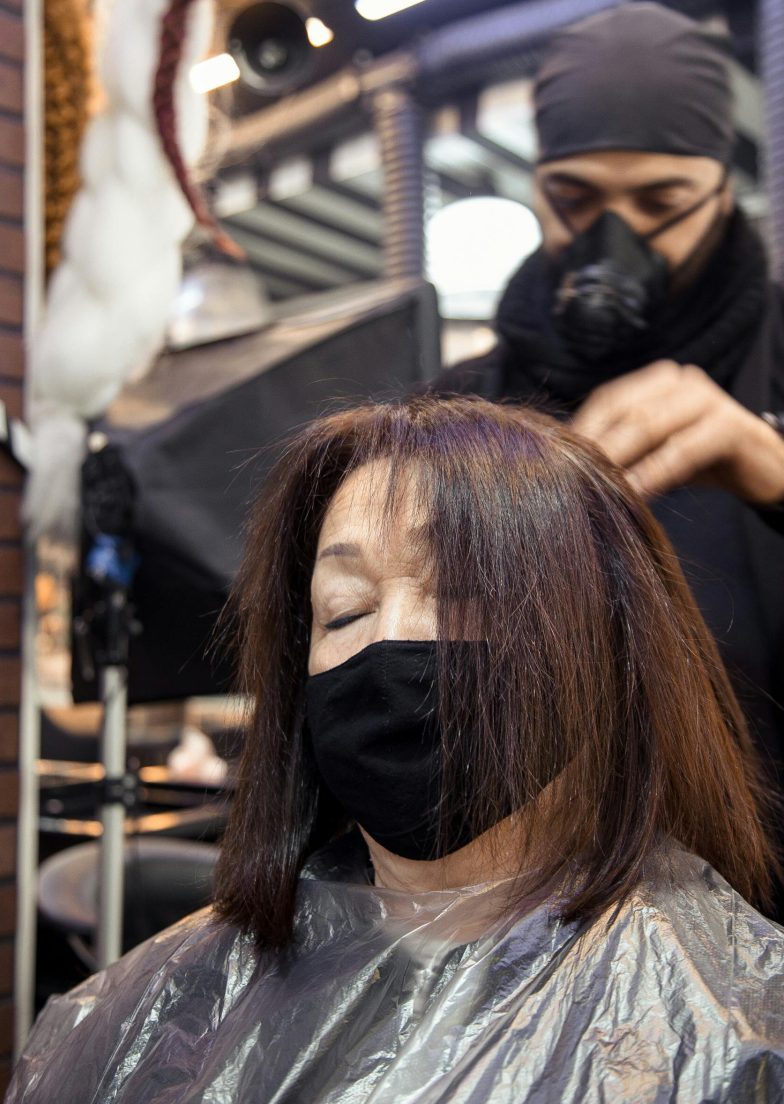I remember the first time I tried a proper hair mask—not just a conditioner I left on too long, but an actual treatment designed to transform my stressed-out strands. After three days of constant compliments, I became a glued. If you’ve been wondering whether those extra minutes in the shower with a hair mask are worth it, I’m here to tell you: absolutely.
Hair masks aren’t just another beauty industry invention to separate you from your money. They’re concentrated treatments designed to address specific hair concerns that regular conditioners simply can’t tackle. Think of your daily conditioner as maintenance and hair masks as that deep repair your hair desperately needs after everything we put it through—heat styling, coloring, environmental damage, and even just everyday stress.
Recent studies show that over 80% of women report some form of hair damage, whether it’s dryness, breakage, or loss of shine. That’s where hair masks come in, delivering intensive nourishment and repair that can visibly transform your hair in just one treatment.
Types of Hair Masks for Different Hair Types
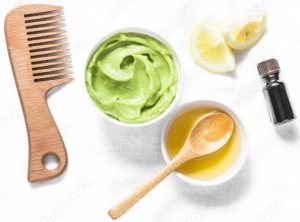
Hair Masks for Dry Hair
If your hair feels like straw more often than silk, you’re in the dry hair club. The best hair masks for dry hair contain humectants and emollients that attract and seal in moisture. Look for ingredients like hyaluronic acid, glycerin, and shea butter that create a moisture-locking barrier around each strand. These masks typically have thicker consistencies and work by penetrating the hair shaft to hydrate from within while coating the outside to prevent further moisture loss.
Hair Masks for Damaged Hair
When your hair has been through chemical treatments, excessive heat styling, or just years of wear and tear, it needs serious structural repair. Hair masks for damaged hair often contain protein-rich ingredients like keratin, silk amino acids, or hydrolyzed wheat protein. These proteins temporarily fill in gaps in the hair’s cuticle, strengthening fragile strands and reducing breakage. Bond-building masks have also revolutionized repair treatments, actually reconnecting broken disulfide bonds within your hair structure.
Hair Masks for Oily Hair
Yes, even oily hair needs masks! The trick is finding formulations that balance and clarify without stripping essential moisture. Clay-based hair masks with ingredients like kaolin or bentonite absorb excess oil while adding minerals that nourish the scalp. These masks typically feel lighter and often incorporate ingredients like tea tree oil or witch hazel that regulate sebum production without triggering your scalp to produce even more oil in response.
Hair Masks for Curly Hair
Curly hair is structurally different from straight hair—each bend in the curl creates a point where moisture can escape and damage can occur. Hair masks for curly hair focus on intense hydration with ingredients like coconut oil, shea butter, and aloe vera that define curl pattern while reducing frizz. These masks are typically richer and may include proteins to maintain curl structure and elasticity, giving your spirals that perfect bounce and definition.
Hair Masks for Fine Hair
When you have fine hair, traditional masks can weigh your strands down and leave them looking flat. Lightweight hair masks for fine hair typically use ingredients like amino acids, rice proteins, and botanical extracts that strengthen and volumize without the heaviness. These formulations often have gel-like or soufflé textures rather than thick creams, providing nutrients without coating the hair in heavy oils.
Hair Masks for Color-Treated Hair
Color-treated hair faces unique challenges, from fading to increased porosity. Specialized hair masks for color-treated hair contain UV filters and antioxidants that protect pigment from environmental aggressors. They also typically have slightly acidic pH levels that help seal the cuticle, locking in color molecules. Look for masks with ingredients like sunflower seed extract, vitamin E, and rice protein that maintain vibrancy while addressing the dryness that often comes with coloring.
Key Ingredients in Effective Hair Masks
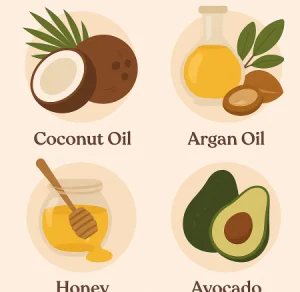
Natural Oils
Natural oils are the workhorses of many effective hair masks, each bringing unique benefits:
- Coconut oil doesn’t just sit on top of your hair—it actually penetrates the shaft to strengthen from within and prevent protein loss.
- Argan oil, rich in vitamin E and fatty acids, restores elasticity and shine without weighing hair down.
- Jojoba oil closely mimics your scalp’s natural sebum, making it ideal for balancing oil production while moisturizing.
- Olive oil, with its high concentration of squalene and antioxidants, provides deep conditioning for extremely dry or coarse hair.
Proteins
Protein treatments are essential for maintaining hair strength and structure:
- Keratin, the protein your hair is actually made of, helps rebuild damaged areas and reinforce weak spots.
- Hydrolyzed wheat protein forms a film around hair strands that adds volume while protecting from environmental damage.
- Silk proteins smooth the cuticle layer for incredible shine and reduced frizz.
- Collagen improves hair elasticity and moisture retention, reducing breakage during styling.
Humectants
These moisture-attracting ingredients are essential for hydration:
- Glycerin draws water from the air into your hair shaft, providing continuous hydration.
- Honey is a natural humectant with antibacterial properties that also soothes irritated scalps.
- Aloe vera delivers intense moisture while balancing pH levels and reducing inflammation.
- Panthenol (vitamin B5) penetrates the hair shaft to increase water retention and flexibility.
Vitamins and Antioxidants
These nutrients protect and strengthen from the inside out:
- Vitamin E fights free radical damage and preserves hair color.
- Vitamin C stimulates collagen production and strengthens hair follicles.
- Biotin (vitamin B7) improves keratin infrastructure for stronger, thicker hair.
- Niacinamide improves scalp circulation for better nutrient delivery to follicles.
Botanical Extracts
Plant-derived ingredients address specific hair concerns naturally:
- Green tea extract stimulates follicles while controlling oil production.
- Ginseng promotes scalp circulation and hair growth.
- Chamomile soothes irritated scalps and brings out highlights in blonde hair.
- Rosemary stimulates growth and adds incredible shine.
How to Choose the Best Hair Mask for Your Hair Type

Hair Porosity Test
Hair porosity—how easily your hair absorbs and retains moisture—is perhaps the most important factor in choosing the right mask. Here’s a simple test: Place a strand of clean hair in a glass of water. If it floats for a long time, you have low porosity hair that resists moisture absorption and needs lighter, heat-activated masks. If it sinks quickly, you have high porosity hair that absorbs moisture easily but also loses it fast, requiring richer, protein-balanced formulations.
Hair Density Assessment
Hair density refers to how many individual strands you have per square inch of scalp. Fine hair (regardless of how much you have) typically needs lightweight masks used less frequently, while coarse, thick hair benefits from richer formulations used more often. A simple way to assess, if you can easily see your scalp without parting your hair, you likely have low density and should choose lighter treatments.
Scalp Condition Evaluation
Your scalp health directly impacts hair health. Dry, flaky scalps benefit from masks with ingredients like tea tree oil or aloe vera that can be applied from roots to ends. Oily scalps generally need masks applied to mid-lengths and ends only, avoiding the root area entirely. Sensitive scalps require fragrance-free formulations with soothing ingredients like oat extract or chamomile.
Hair Goals
What you want to achieve should guide your mask selection:
- For volume, choose protein-rich masks with minimal oils.
- For shine, look for cuticle-sealing ingredients like apple cider vinegar or argan oil.
- For damage repair, prioritize bond-building technology and keratin.
- For color protection, select antioxidant-rich, low-pH formulations.
- For frizz control, embrace masks with humidity-resistant polymers and silicones.
DIY Hair Mask Recipes for All Hair Types
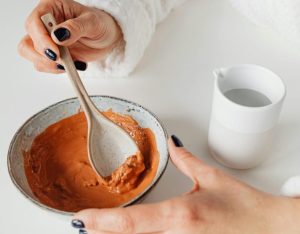
Homemade Hair Mask for Dry and Damaged Hair
This avocado-based mask delivers intense moisture and repair:
- 1 ripe avocado
- 2 tablespoons honey
- 1 tablespoon olive oil
Blend ingredients until smooth, apply to damp hair, and leave on for 30 minutes before rinsing thoroughly. The healthy fats in avocado penetrate the hair shaft while honey locks in moisture and olive oil adds incredible shine.
Natural Hair Mask for Oily Scalp and Hair
This clay-based formulation absorbs excess oil without drying:
- 2 tablespoons bentonite clay
- 2 tablespoons apple cider vinegar
- 5 drops tea tree oil
- Water as needed for consistency
Mix ingredients to form a smooth paste, apply to roots and work through to ends, and rinse after 15 minutes. Clay draws out impurities while apple cider vinegar balances pH and tea tree oil controls sebum production.
Protein-Rich DIY Treatment for Strengthening Weak Hair
This egg-based mask rebuilds strength:
- 1 whole egg
- 1 tablespoon plain yogurt
- 1 teaspoon honey
Whisk ingredients together, apply to clean, damp hair, and rinse with cool water after 20 minutes. The proteins in egg and yogurt temporarily repair weak spots in the hair structure while honey adds moisture to prevent brittleness.
Hydrating Homemade Mask for Curly and Coily Hair
This ultra-moisturizing treatment defines and nourishes curls:
- 2 tablespoons coconut oil (melted)
- 1 tablespoon shea butter (melted)
- 1 tablespoon aloe vera gel
Blend ingredients until smooth, apply to sectioned hair, and leave on for 45 minutes before shampooing out. This rich combination penetrates coily and curly hair types, providing lasting hydration and definition.
Gentle DIY Mask for Fine and Thinning Hair
This lightweight rice water treatment adds volume without heaviness:
- 1/2 cup rice water (soak white rice in water for 30 minutes, then strain)
- 1 teaspoon honey
- 3 drops rosemary essential oil
Mix ingredients, spray or pour onto clean hair, massage through, and rinse after 15 minutes. Rice water contains inositol that strengthens strands from within while temporarily plumping the hair shaft for added volume.
How to Apply Hair Masks Correctly
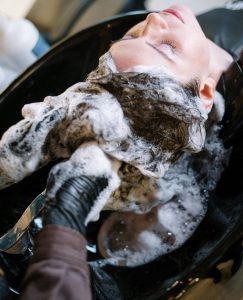
Step-by-Step Application Technique
- Start with freshly shampooed, towel-dried hair (slightly damp, not dripping).
- Detangle with a wide-tooth comb before applying to ensure even distribution.
- Apply mask starting at mid-lengths and working down to ends first.
- If your scalp needs treatment, apply remaining product to roots last.
- Use a wide-tooth comb to distribute the mask evenly throughout hair.
- Twist hair up and secure with a clip (avoid tight elastics that can cause breakage).
Optimal Timing
Timing varies based on hair needs:
- Normal maintenance: 5-10 minutes
- Deep conditioning: 15-30 minutes
- Intensive repair: 30-45 minutes
- Protein treatments: Follow package directions precisely—too long can cause brittleness
The longer isn’t always better rule applies especially to protein-based masks, which can actually cause breakage if left on too long.
Heat Application Methods
Heat opens the cuticle for deeper penetration of ingredients:
- Cover with a shower cap and wrap in a warm towel
- Use a bonnet dryer attachment if you have one
- Sit in a steamy bathroom to activate ingredients
- Use specialized cordless heat caps designed for deep conditioning
Apply heat for the first 10-15 minutes of treatment time, then allow to cool before rinsing for best results.
Frequency Recommendations
- Dry, damaged, or curly hair: Weekly treatments
- Normal hair: Bi-weekly treatments
- Fine or oily hair: Once every 2-3 weeks
- Color-treated hair: Weekly with color-safe formulations
- Chemically processed hair: Alternate protein and moisture masks weekly
Over-masking can lead to product buildup or moisture overload, so always assess your hair’s response and adjust accordingly.
Best Commercial Hair Masks by Hair Type
Top-Rated Masks for Severely Damaged Hair
When your hair needs serious intervention, these masks deliver visible improvement after just one use:
- Olaplex No. 3 Hair Perfector rebuilds broken bonds at a molecular level
- Briogeo Don’t Despair, Repair! Deep Conditioning Mask combines oils and B-vitamins for structural repair
- Amika The Kure Intense Bond Repair Mask uses bond cure technology for chemically treated hair
- K18 Leave-In Molecular Repair Hair Mask works in just 4 minutes to restore damaged keratin chains
Best Hair Masks for Maintaining Healthy Hair
For hair that just needs regular maintenance and protection:
- Moroccanoil Intense Hydrating Mask with argan oil preserves elasticity and shine
- Aveda Botanical Repair Strengthening Mask uses plant-derived building blocks to fortify strands
- Christophe Robin Regenerating Mask with rare prickly pear seed oil nourishes without weighing hair down
- Kérastase Nutritive Mask for severely dry hair prevents future damage while addressing current dryness
Budget-Friendly Options with Professional Results
Great hair doesn’t have to break the bank:
- SheaMoisture Raw Shea Butter Deep Treatment Masque delivers salon-quality results for textured hair
- Garnier Fructis 1 Minute Hair Mask with papaya extract works quickly for those short on time
- The Ordinary Multi-Peptide Serum for Hair Density functions as a lightweight mask for fine hair
- Eva NYC Therapy Ses sion Hair Mask uses argan oil and plant proteins at an accessible price point
Salon-Quality Masks for Specialized Treatments
When you need targeted solutions for specific concerns:
- Pureology Hydrate Superfood Treatment Mask preserves color while deeply conditioning
- Davines The Renaissance Circle for severely damaged ends uses babassu butter and yellow clay
- Philip Kingsley Elasticizer pre-shampoo treatment restores elasticity to brittle or stretched hair
- Leonor Greyl Masque Quintessence deeply regenerates extremely dry, brittle, or color-damaged hair
Commercial Hair Mask Application Tips and Tricks
Pre-Mask Treatments
Prep your hair for maximum mask absorption:
- Use a clarifying shampoo before masking to remove buildup (especially for fine hair)
- Steam your hair first in a hot shower to open the cuticle
- Gently exfoliate your scalp with a scrub treatment for better product penetration
- Apply masks to dry hair first for intensely damaged or high porosity strands—they’ll absorb more product
Hair Mask Cocktailing
Create customized treatments by mixing products:
- Add 2-3 drops of hair oil to your mask for extra shine
- Mix in a pump of bond-building treatment for additional repair
- Blend in a few drops of peppermint oil to stimulate the scalp
- Combine protein and moisture masks in a 1:2 ratio for balanced treatment
Overnight Masking
For extremely dry or damaged hair, overnight treatments can be transformative:
- Choose masks specifically formulated for overnight use or silicone-free options
- Protect your pillowcase with a silk scarf or bonnet
- Focus product on mid-lengths and ends, avoiding the scalp if you have fine hair
- Rinse thoroughly in the morning with cool water to close the cuticle
Section Application for Thick or Long Hair
Ensure every strand gets treated:
- Divide hair into 4-6 sections using clips
- Apply mask to one section at a time, working from bottom to top
- Use a paddle brush to distribute product evenly through each section
- Twist each section into a loose bun after application to keep product concentrated
Common Hair Mask Mistakes to Avoid
Using Too Much Product
More isn’t always better with hair masks:
- Start with a quarter-sized amount for short hair, increasing as needed
- Focus on even distribution rather than quantity
- Pay attention to how much your specific hair type absorbs—fine hair needs less, coarse hair needs more
- If product sits on top of your hair rather than absorbing, you’re using too much
Incorrect Application Techniques
Proper technique maximizes benefits:
- Applying to soaking wet hair dilutes the mask and prevents absorption
- Skipping detangling leads to uneven distribution
- Focusing only on damaged ends misses opportunities for overall hair health
- Rushing the application process creates patchy results
Frequency Errors
Finding the right masking schedule takes observation:
- Over-masking with protein treatments can cause brittleness and breakage
- Under-masking dry hair leads to continued moisture loss and damage
- Alternating different treatment types prevents moisture-protein imbalance
- Seasonal adjustments are necessary—summer typically requires more moisture, winter more protection
Product Incompatibility Issues
Not all ingredients work well together:
- Using silicone-heavy masks can build up on low-porosity hair
- Applying oil-based masks to fine hair can cause flatness that lasts days
- Mixing certain proteins with alkaline ingredients can damage the hair shaft
- Using color-depositing masks with bond builders can inhibit the repair process
Conclusion
I started this hair journey just like you might be now—standing in the haircare aisle completely overwhelmed by options, or staring at my dull, damaged strands in the mirror wondering if they could ever look healthy again. The answer is yes, they absolutely can, and the right hair mask is often the turning point.
Whether you’re dealing with frizz that won’t quit, damage from that bleach job you maybe shouldn’t have done at home, or just hair that’s lost its luster over time, there’s a mask out there with your name on it. Hair masks aren’t magic potions—they’re scientific formulations designed to target specific hair concerns at a molecular level.
The beauty of understanding your hair type and its specific needs is that you can be strategic about your hair care routine. You don’t need ten different products; you need the right one used correctly. Start with one quality mask appropriate for your hair type, use it consistently, and watch as your hair transforms week by week.
Remember—healthy hair isn’t just about appearance. When your hair feels good, you feel good. There’s something fundamentally confidence-boosting about running your fingers through strong, responsive strands that move the way you want them to. So go ahead, give yourself those extra ten minutes of self-care. Your future hair (and future self) will thank you for it.
- 7+ Proven Home Remedies for Sneezing That Actually Work - August 2, 2025
- 10 Natural Remedies for Eczema Relief - June 5, 2025
- How to Clean Pool Table Felt Without Damaging the Surface - May 9, 2025

